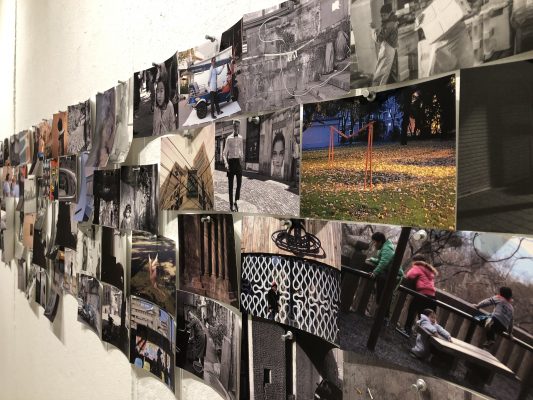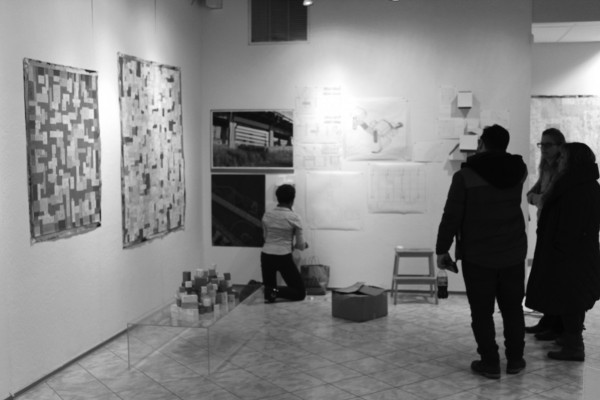“Chile: Dignidad, 1973-2023” is an exhibit in Fordham Lincoln Center’s Lipani Gallery that explores the tragedy and state-sanctioned violence of the Pinochet regime and the legacy that Chilean fascism continues to maintain in electoral politics, half a century later.
Created by Chilean-born artist María Verónica San Martín, the multidisciplinary exhibition utilizes several different mediums throughout the exhibit, including performance art, sculptures, engravings and sketches in order to tell the viewer the story and history behind Chile’s most brutal dictatorship.
On Sept. 11, 1973, a U.S.-backed coup in Chile overthrew democratically elected socialist and former Chilean President Salvador Allende in favor of Augusto Pinochet Ugarte. Pinochet, a brutal and fascist dictator, was responsible for egregious human rights violations throughout the tenure of his regime; this included the political repression of leftist dissidents, torture and routine accounts of “disappearances” of civilians.
Through her work, San Martín aimed to focus the exhibit on the motif of “dignidad” — which translates to dignity from Spanish. There are three branches of the motif, according to the press release from Fordham University Galleries, that are focused on both physical locations in Chile and the perseverance of Chilean citizens in relation to the concept of ‘dignidad’.
One branch is focused on the establishment of Colonia Dignidad in 1961, a fascist compound in the south of Chile that served as a location for the torture and repression of anti-Pinochet leftists. The second is a plea from San Martín where she calls out for the dignity of the people oppressed and mistreated for decades under the barbaric and violent dictatorship. Another reference to the modern-day usage of the motif, San Martín centers a piece around the recently renamed “Plaza Dignidad” in reference to the Chilean social protests of 2019.
San Martín’s decision to call out the U.S.’s involvement in Chilean political and economic devastation provides a bold and necessary central theme to this gallery.
The physical connection serves as a symbol of solidarity and perseverance; two Chilean Americans who have been physically distanced from their home country, due to no choice on their part.
In one particularly moving piece, “Make the Economy Scream,” San Martín fashioned a handkerchief out of a declassified document that featured a conversation between then former U.S. President Richard Nixon and former Secretary of State, Henry Kissinger. The document revealed that the two individuals professed a desire to make Chile’s economy suffer.
Previously, under Allende, Chile had officially nationalized their copper mines, much to the chagrin of the United States economy. Many historians believe that this decision increased Chilean economic isolation and greatly led to the United States’ involvement in the 1973 coup d’etat, a decision that caused the unconscionable economic suffering of Chilean citizens.
San Martín displays the personal and individual frustrations brought upon by the decades of Chilean political turmoil.

The artist’s standout piece is an etching on tympan paper, titled “Dignidad,” featured on the left side of the gallery. The drawing is a depiction of two hands grasped together, modeled after San Martín and her son. The physical connection serves as a symbol of solidarity and perseverance; two Chilean Americans who have been physically distanced from their home country, due to no choice on their part.
Carl Fischer, professor of Spanish and chair of Fordham’s Modern Languages and Literature Department, curated the exhibit. Fischer shared that he is a fan of San Martín’s artwork and wanted to use this opportunity to highlight her work, uplift a voice that was speaking for the dignity and prosperity of the oppressed in Chile, and commemorate the 50th anniversary of Chile’s military coup.
“These days there are a lot of people who have been negating the human rights violations that occurred during the dictatorship,” he said. “The right wing in Chile, which has deep, longstanding ties to the right wing here in the U.S., has been actively working to rewrite the history of what happened in 1973.”
Most importantly, according to Fischer, curating this exhibit reinforced his belief in the importance of remembering the devastation behind this period of history and what that will teach us today and in the future.
“In Spanish we call this remembrance process an ‘ejercicio de memoria’ (‘memory exercise’),” Fischer said. “Remembering is very tied to matters of the heart — the Spanish verb ‘recordar,’ to remember, has the same root as ‘corazón’, the word for heart — so there’s no way for this commemoration not to be emotional.”
The exhibit has been on display since Aug. 21 and will be featured at the Lipani Gallery until its closure on Oct. 4.


















